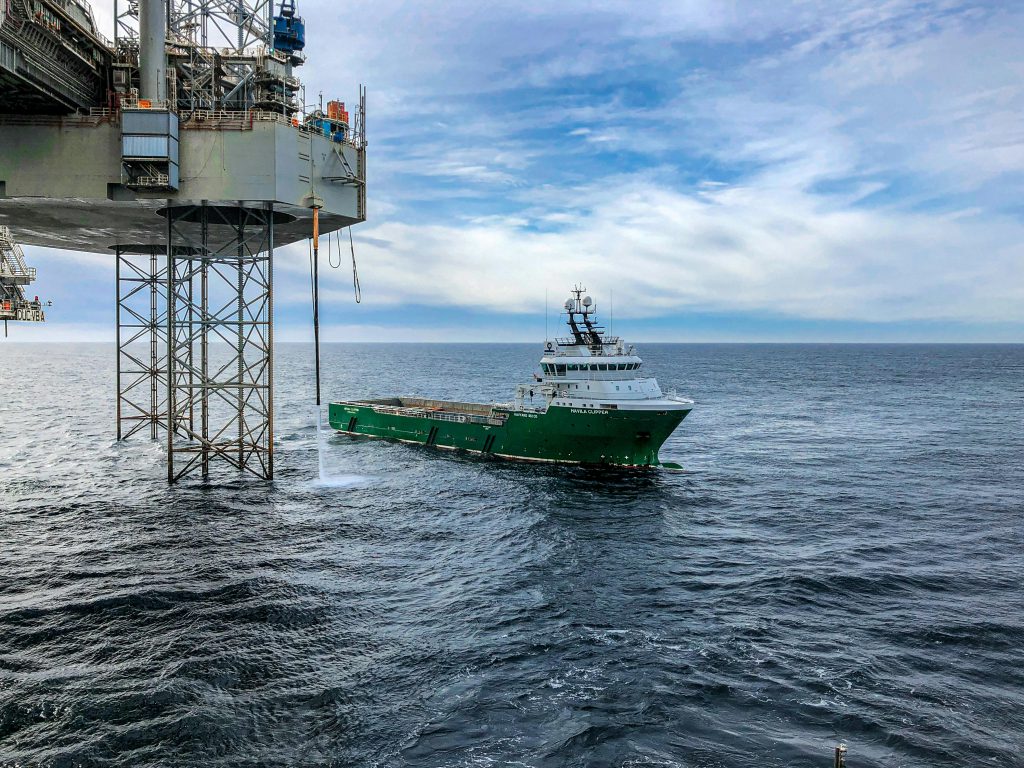How well are you maximizing your satellite communication systems?
In today’s offshore environment, connectivity is no longer just about staying in touch—it’s about staying operational, compliant, and safe. As drilling platforms move further offshore and operations grow more data-intensive, owners and operators must ask themselves: Am I doing enough with the data my vessels are already collecting? And more importantly: Can I trust that data to move securely, in real-time, to where decisions are made?
This post explores how next-generation communications are transforming offshore oil and gas platforms—and why the smartest operators are upgrading now.
The Challenge: Managing more data, more reliably
Offshore oil and gas installations are facing a digital tipping point. As systems onboard become more automated and data-rich—from dynamic positioning (DP) to equipment health monitoring via IoT sensors—the need to move large volumes of data from rig to shore in real time has never been more critical.
Here’s what’s happening out there:
- Satellite data usage on offshore support vessels grew by 46.8% from 2021 to 2022.
- The maritime satellite communication market (including OSVs) was valued at $5.9 billion in 2023 and is expected to grow by an average of over 8.5% annually through 2032, driven by tech investments and rising demand for tracking. (GMI, 2024)
- Vessels are generating more operational data than ever—navigation, engine diagnostics, environmental data, personnel movement, and more.
- Compliance requirements like GMDSS modernization and cybersecurity protocols are getting stricter.
- Downtime is not just expensive—it’s a safety risk.
So the question becomes: How do you handle the flood of offshore data in a way that improves—not complicates—your operation?
From data collection to operational intelligence
To truly benefit from the data being generated offshore, operators need a communications infrastructure that does more than just “connect.” It needs to collect, transmit, secure, and optimize data in real time. Here’s what that looks like in practice:
1. Smart data collection and integration
Modern platforms are using centralized data systems that integrate inputs from radar, navigation, environmental sensors, and onboard equipment. This creates a unified view of the vessel’s condition and performance—making it easier to detect anomalies early and avoid failures.
Radio Holland offers systems that unify this data and make it accessible across your fleet.
2. Advanced communication networks
New technologies like virtualization and containerization are improving how offshore networks operate. They allow for scalable, resource-efficient deployment of communication services—and seamless integration of IoT sensors.
This is essential for dynamic operations such as real-time monitoring of fuel usage, equipment health, and weather conditions.
3. Reliable data transmission with satellite systems
Satellite communications form the backbone of rig-to-shore connectivity. High-speed systems such as Iridium Certus, Intelsat, and Starlink now offer real-time, low-latency communication, even in deepwater locations.
With these systems in place, platform data can reach shore-based teams instantly—enabling better decisions and faster interventions.
4. Cybersecurity and data protection
Security can’t be an afterthought. Encryption, regular patching, and access control protocols are crucial in preventing cyber breaches. It’s not uncommon to hear stories—like the USB cable used to charge a phone that ended up frying a radar system.
Radio Holland helps operators audit vulnerabilities and apply best-practice security protocols.
The technology: What’s new (and what matters most)
Several next-gen satellite systems are making waves in the offshore space:
- Marlink: Offers hybrid connectivity with high-bandwidth VSAT, LTE, and LEO/MEO options. It’s built for automation and remote diagnostics.
- Intelsat: Known for robust, global coverage, with support for real-time monitoring and production management.
- Starlink: Disrupting the market with cost-effective, high-speed LEO connectivity ideal for remote offshore sites.
With these platforms, operators no longer need to compromise between cost and capability. You can have both—especially when systems are integrated and managed by a trusted partner.
Why it matters: Safer and smarter operations
Reliable data flow from rig to shore is the foundation of smarter offshore management. Here’s what you can achieve with the right setup:
- Enhanced safety through real-time monitoring
IoT sensors and satellite-enabled surveillance tools provide constant oversight. This enables faster responses to safety threats like gas leaks or equipment faults—reducing the chance of escalation.
- Improved emergency coordination
Low-latency communications mean that in an emergency, platforms, support vessels, and shore teams stay in sync. That can mean the difference between a minor incident and a major disruption.
- Predictive maintenance and reduced downtime
Constant equipment monitoring means issues are flagged early. Predictive maintenance planning reduces failures and extends asset life—saving both time and money.
- Better compliance and environmental control
With continuous data streaming, operators can maintain full visibility over emissions, environmental conditions, and compliance logs—vital for audits and reporting.
Radio Holland: Helping offshore operators stay connected and protected
At Radio Holland, we understand that in offshore operations, there’s no margin for error—and no room for outdated systems. That’s why we work closely with operators to build tailored communications solutions that deliver:
- Certified Iridium and Starlink integration
- Seamless DP, radar, and AIS system connectivity
- 24/7 support and cybersecurity audits
- Expertise grounded in real-world offshore experience
Whether you’re running a single deepwater rig or coordinating an entire fleet of support vessels, we’ll help you turn data into decisions—and risk into resilience.

Let’s talk offshore connectivity
Ready to modernize your offshore communication systems? Let’s start with a conversation. Contact Radio Holland today to discuss how we can improve your risk management, safety, and operational performance.

